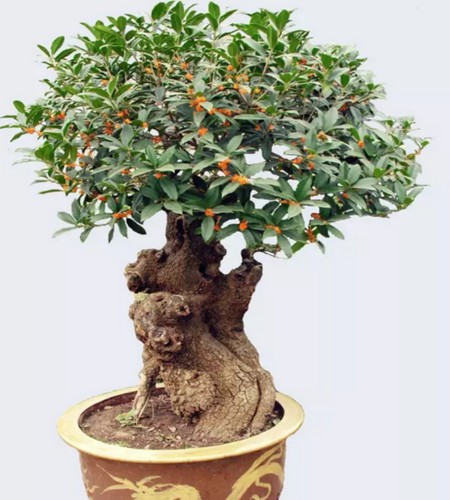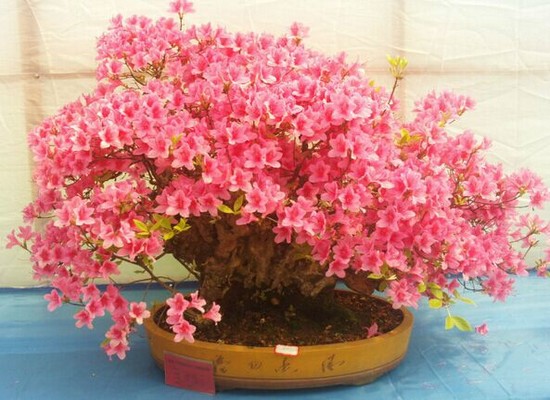Yellow leek bonsai with the integration of art and food
As the saying goes, there is no Chinese New year without leek. Yellow leek is often used as stuffing, with diced meat or eggs, making pies, making dumplings, making steamed buns and so on. Yellow leek dumplings, eat in the mouth, the fragrance to the nostrils, endless aftertaste. Also used as a seasoning spice, but also can be fried, boiled, cold, oily, tender, fragrant and delicious, making the aftertaste of lips and teeth hard to finish. Eat not only yellow leek, but also a kind of quality of life.

Yellow leek integrates nutritional value and medicinal value, and is rich in protein, fat, carbohydrates, crude fiber, calcium, phosphorus, carotene, thiamine, riboflavin, ascorbic acid and other nutrients needed by the human body. in addition, eating leek regularly can strengthen the body, prolong life and prolong life. Traditional Chinese medicine believes that leek has the effects of strengthening stomach, refreshing, relieving sweat and astringency, tonifying kidney and helping yang, promoting appetite and treating muscle and bone injuries. Modern medicine has proved that the rich cellulose in leek can enhance the peristalsis of the intestinal tract, clean the intestinal tract, make the stool smooth and prevent the occurrence of colorectal cancer. The volatile components and sulfur compounds in yellow leek can dilate blood vessels and reduce blood lipids.
"cut off Dongfeng material is extremely cold, Artemisia annua and yellow leek try spring plate". Huang Jiu quietly emerged from the poems of Su Shi, a poet of the Song Dynasty, and came to our dinner table through a long period of time. Yellow leek was formerly known as Fengben, commonly known as yellow lotus leek. Known for its thick leaves, fresh and tender color and fragrance, it is known as the "treasure in dishes" and was once a palace tribute in the Ming and Qing dynasties. The cultivation of Nangong yellow leek, which can be traced back to the Han Dynasty, has a history of more than 2000 years. Up to now, the uniqueness of Nangong yellow leek has become a good gift for relatives and friends throughout the country.
The cultivation of leek into bonsai, both ornamental and edible, is actually the integration of art and food! Watching the leek leaves change from green to yellow, leaf stems from goose yellow to tooth white, and roots to almost pure white. Pull up a handful of yellow leek, revealing an ethereal and elegant gas, it is really extremely loving and pitiful. Yellow leek bonsai green environmental protection, fast growth, easy to manage, and not affected by the region and season, can not only enjoy the fun of personal labor but also receive safe and assured vegetable products, meeting the pastoral feelings of urban people living in the reinforced concrete world for a long time!
Shennong "herbal" cloud: "the beauty of leek lies in the yellow, and all the luxuries are precious." The leek root has stored nutrition for a year, absorbs the spirit of heaven and earth, and has the essence of all things, so it is only necessary to ensure an appropriate amount of water supply during cultivation, the first watering thoroughly, and then watering once every 5-7 days. The principle of watering is to ensure that it is dry and wet. The harvest time is usually 10-15 days, and it can be harvested at any time according to growth or needs, and then watered 2-3 days after harvest. Generally, a pot of leek can harvest 3-4 crops in a row. Let you sow hope in watering and experience the mysteries of nature in harvest.
Time: 2019-05-25 Click:
- Prev

Causes and Countermeasures of non-flowering of potted Osmanthus fragrans
Osmanthus fragrans is one of the top ten traditional famous flowers in China, and it is also a good material for making bonsai. However, many sweet-scented osmanthus bonsai have not bloomed or rarely blossomed for many years. According to the habits of sweet-scented osmanthus and years of practice, the author analyzes the common reasons and countermeasures for the failure or lack of flowering of sweet-scented osmanthus bonsai.
- Next

Key points of cultivation techniques and matters needing attention of Rhododendron bonsai
Rhododendron likes cold and cool, and avoids hot sun. The growth temperature is from 15 ℃ to 25 ℃. Most varieties can withstand the low temperature of minus 8 ℃ to 12 ℃. Garden cultivation should be arranged under the forest and beside the valley. too strong light can easily cause leaves to turn yellow, reverse curl and poor growth, while insufficient light will affect flower bud differentiation and flowering number.
Related
- Fuxing push coffee new agricultural production and marketing class: lack of small-scale processing plants
- Jujube rice field leisure farm deep ploughing Yilan for five years to create a space for organic food and play
- Nongyu Farm-A trial of organic papaya for brave women with advanced technology
- Four points for attention in the prevention and control of diseases and insect pests of edible fungi
- How to add nutrient solution to Edible Fungi
- Is there any good way to control edible fungus mites?
- Open Inoculation Technology of Edible Fungi
- Is there any clever way to use fertilizer for edible fungus in winter?
- What agents are used to kill the pathogens of edible fungi in the mushroom shed?
- Rapid drying of Edible Fungi

